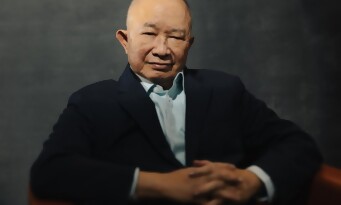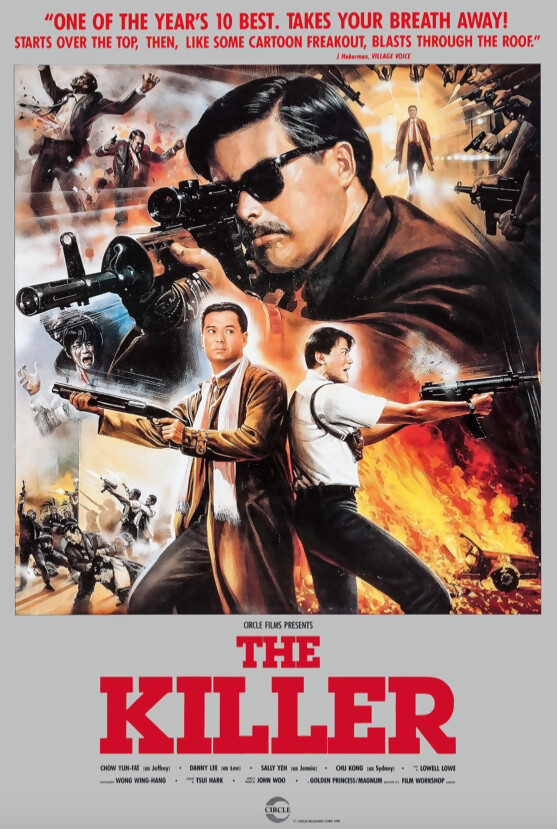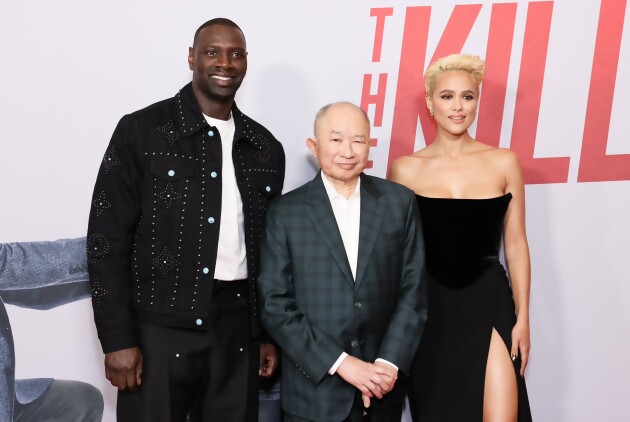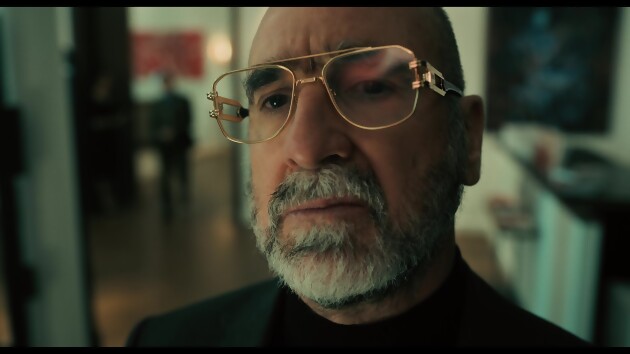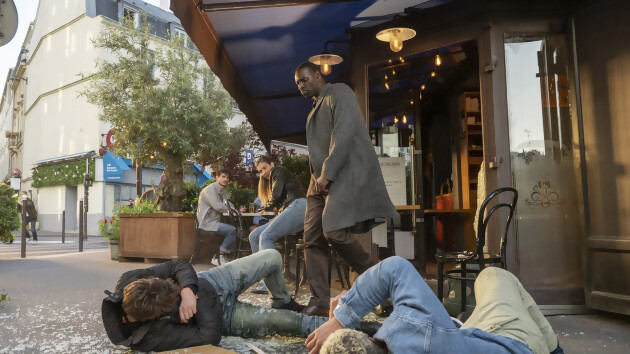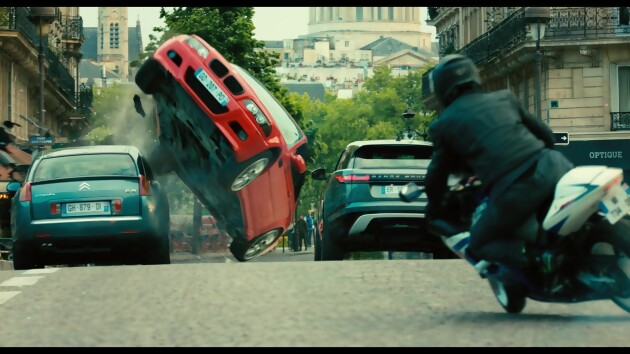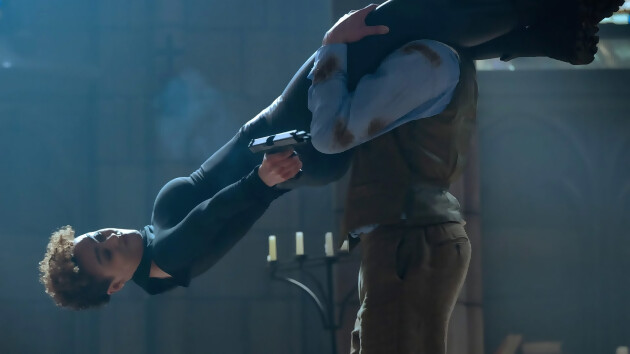John Woo is – already – back. Not even a year after his perfectly forgettable Silent Night (and which was not even entitled to a cinema release), the Hong Kong filmmaker, master of action, returns with a long-standing project: that of ‘remaker’ his masterpiece of 1989. Thirty-five years later and at the age of 78, John Woo has finally managed to follow through with this idea: replacing the male character of Chow Yun-Fat with a young woman. A gender inversion desired by the director himself, who was suggested to transpose the story into the postcard Paris of the 2020s. An explosive cocktail, and not in the good sense of the word…
If you are a fan of Hong Kong action films, you already know that the remake of The Killer has been available in the United States since August 23, directly for streaming on the Peacock platform. In France, we therefore had to wait until October 23 for the film to be released in cinemas, thanks to the motivation of Universal Pictures (which owns Peacock, it is no coincidence). It’s very appreciable that in France, the work of Tonton Woo is still recognized, but let’s not hide our faces, it’s already been two months since the nauseating reputation of this remake scared away all of the filmmaker’s fans Hong Kong. When I think that it is he himself who is at the origin of this massacre, he who revolutionized action cinema, he who invented gun-fu, he who influenced Hollywood like never before, there is enough to bang your head against a wall when you see such a result. But let’s put aside my moods, in this review of the remake of The Killer, we will try to understand why John Woo persists in destroying his career as he has done for so many years…
RETURN TO THE WEST
Understanding the disaster that is this Western remake of The Killer also means understanding how John Woo works in his head. We know that John Woo is the undisputed and indisputable master of modern action cinema. It was he who laid the foundations of gun-fu in the 80s, notably with The Crime Syndicate, also known as ‘A Better Tomorrow’ for its original title. For people who don’t know, Gun-fu is a portmanteau word, which is the contraction of gun, and the “fu” of kung-fu. This is the way of choreographing gunfights in a stylized way, a bit like a martial art choreography but with firearms. It was created by John Woo, therefore, in Hong Kong and other filmmakers like Tsui Hark, Ringo Lam, Johnnie To or Wilson Yip will bring their respective touch. Afterwards we know the rest, when something works, the Americans arrive and pump everything away, with huge amounts of petro-dollars. And that’s how Hollywood managed to lure John Woo into its net to direct his own films for American audiences. Broken Arrow, Volte/Face, Mission Impossible 2, Paycheck and even Windtalkers, John Woo’s American career is very little appreciated by his most purist fans. Personally, the only American film that I still adore today is Hard Target / Manhunt with Jean-Claude Van-Damme. In this film there is a way of magnifying JCVD’s high kicks, transformed into real gunshots which fascinate me. It’s an incredible film, which still has the fiery eye of John Woo in his way of filming the action, without him having yet disguised his know-how, influenced by an American producer. Manhunt is an underrated film and one that I find much better than Volte/Face which I find does not age very well, the fault also of Nicolas Cage and his unbearable overacting…
INFLUENCE & LEGACY
The thing that you also have to understand with John Woo is that he has a very marked style, which also belongs to an era, that of the 80s/90s and which is almost candor, quite characteristic of Asian cinema. Besides. It’s a mood and situations that only work in Asia, whether in Hong Kong, China, Korea and even Japan depending on the genre of film. And this somewhat marshmallowy atmosphere is difficult, if not impossible, to transpose to the West. If John Wick is today established as the benchmark for gunfight films, we must above all remember that it is the legacy of John Woo which allowed stuntmen like Chad Stahelski to become recognized filmmakers in the genre. Because yes, without the HK cinema that Hollywood plundered for decades, notably with The Matrix, there is no John Wick today. And I am firmly convinced that John Woo sees things like that. His cinema was never intended to please Westerners, just his country of origin and the surrounding neighbors. By his own admission, the filmmaker has always been surprised that his works can be such a hit internationally and interest producers, other than in Asia. Except that John Woo’s influence is such that it was the Americans who came to seek him out precisely to recover his best ideas. So, how can we adapt the John Woo style to American style? Well, it’s a reflection that the Hong Kong filmmaker must have had with the American producers of the time. We have to switch the John Woo formula to Western sauce. A bit like Asian restaurateurs did in the early 1980s to gain acceptance for the exotic flavors of our cuisine, such as the famous Cantonese rice, peas and ham. While this is just the recipe adapted for the Western palate…
And now that the presentations are made, that the context is set, we come to this remake of The Killer which bears all the stigmata of the John Woo formula of the 90s, candor included and which adapts horribly poorly to the canons of the West. And we see this throughout the film with, to begin with, this postcard Paris, a bit cliché, its absolutely new dialogues, nevertheless signed by the hand of Brian Helgeland, the guy behind the script of LA Confidential, Mystic River by Clint Eastwood , Man on Fire, Robin Hood by Ridley Scott or even Payback which he directed himself. A big name in Hollywood, so much so that his name is plastered large on the film’s poster… But of the script for The Killer from 1989, there’s not much left, except the friend relationship -enemy between the cop and the killer, as well as his devouring passion for this young woman whom he blinded after a shooting that went wrong. Apart from these themes, the entire remake has been modified, a bit like what was done with the 2024 version of The Crow, another disaster from Hollywood. It doesn’t really bother me that the original story is changed, just making a copy and paste, it’s not necessarily interesting and it also allows you to surprise people who know the original work. On the other hand, doing it with so many bad choices is another problem.
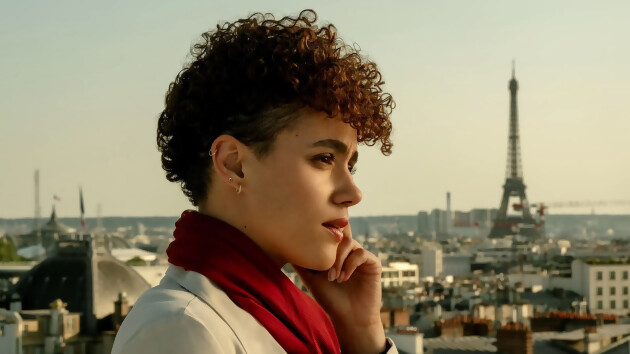
It was therefore decided to transpose the story to Paris, with a French atmosphere, Parisian I would even say, which is not necessarily a bad idea, since the 1989 film The Killer was strongly inspired by Le Samourai de Jean -Pierre Melville. Chow Yun-Fat was his own Alain Delon, and recently, John Woo paid tribute to the death of Alain Delon, explaining that Le Samouraï by Jean-Pierre changed his life and his perception of cinema. So the idea of making it a mirror to Alain Delon’s Samourai would have been great, but we are more in a lighter version like Emily in Paris, or even Plus Belle la Vie. And we’re hardly exaggerating… So French atmosphere for this remake, with an international cast, but with quite a few local actors all the same. Omar Sy as Inspector Li, but renamed to Sey. Nathalie Emmanuel in that of the hitwoman and who therefore replaces Chow Yun-Fat and who was renamed Zee. Sam Worthington as the latter’s mentor, Tcheky Karyo in the role of the fashion designer who makes 3-piece suits, Saïd Taghmaoui in the role of a Saudi prince, and cherry on the well-loaded gun, Eric Cantona in the role of Gobert, the boss of the French mafia. We don’t know if it was the actor himself who had this brilliant idea of aping Robert de Niro from Raging Bull version “Did you fuck my wife”, but the result is as laughable as it is uncomfortable…
Special mention also to Grégory Montel who plays the role of Omar Sy’s French teammate, whose performance sounds so fake that we are now convinced that there was no direction from the actors during filming. If you ever watch the film in original language, the film has fun passing on the language of its dialogues. Omar Sy and Grégory Montel are two French cops in Paris who speak French for a good part of the film, but who sometimes allow themselves to switch to English depending on the situation. Sometimes, it is justified by the fact that they are accompanied by an Anglo-Saxon teammate, but often, it has no meaning or coherence, other than not to lose too much the American public, allergic to foreign languages. We would also have preferred that John Woo had screened his film entirely in English, a bit like Ridley Scott did with his Napoleon, because the result would have been significantly less shocking, and above all more coherent in its proposition which would have been assumed .
SELF-PARODY
What also made the charm of The Killer of 1989 was the class that emanated from the actors. As has been said, Chow Yun-Fat was the Asian Alain Delon, the charm and elegance that exuded on the screen. Which is far from being the case with this remake where poor Nathalie Emmanuel tries to get by as best she can. Certainly she is not helped with her extrapolated facial expressions, but her acting remains correct, which is far from being the case of the other actors, all embarked on an adventure which was lost along the way. There was no direction of actors on the set, especially since John Woo is a filmmaker who will put his priorities on the action scenes. Except that here too, the result is light years away from what the filmmaker offered us when he was at his peak in the 90s. We are instead going to find all the clichés of his cinema, right down to caricature. . The slow motion, the gangsters on motorcycles dressed all in black, helmet visors on their heads, the double-guns, the jumps forward, the sliding, the Mexican standoffs, the doves, well just one since the rest was replaced by very gray pigeons from Paris, which says a lot about the analogy… There are even the bodies of the enemies which bend in slow motion even before having received the bullets. Everything is there, with the same candor of the time, as if John Woo thought he was still in the 90s. Except that we are in 2024, that everyone has already pillaged his art, deconstructed it and even made it evolve. I don’t know if John Woo has gone senile or what, I think he’s stuck in the 90s and refuses to evolve, in fact, just reveling in what he does.
There are a few small flashes of directorial ideas, notably during the hospital shootout and the interrogation scene, but that’s it. The rest stinks of mothballs, especially the first action scene where Omar Sy chases a thug in a red BMW which is catastrophic. It’s poorly filmed, it’s full of false connections, gross inconsistencies, to the point where John Woo doesn’t even take the trouble to hide the faces of the stuntmen who replace the actors in certain scenes, which was already the case in John Woo’s 90’s productions and which is quite characteristic of his cinema. What was stylized 30 years ago is no longer so today, to the point where certain stunts are difficult to watch in 2024. We instead recommend that you watch City of Darkness by Soi Cheang to cleanse yourself of this affront and see that the revival of Hong Kong cinema lies there…
OUR RATING: 3/10
